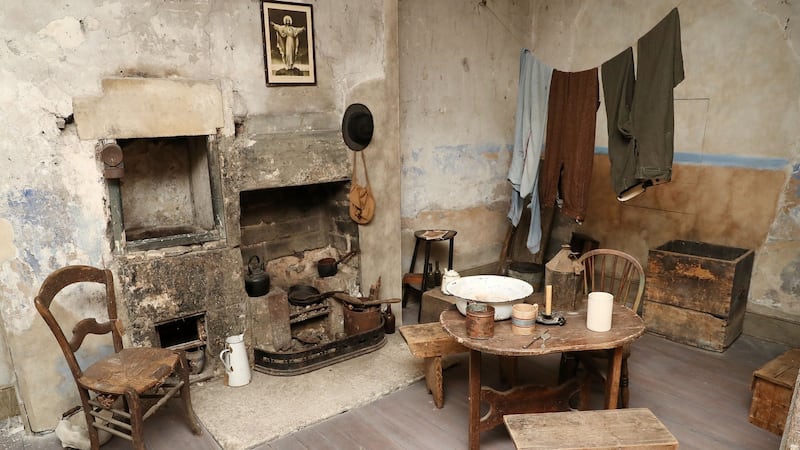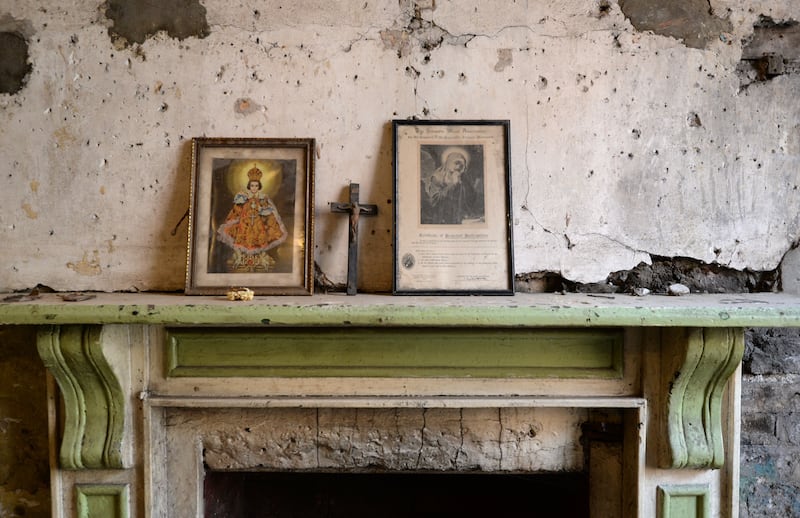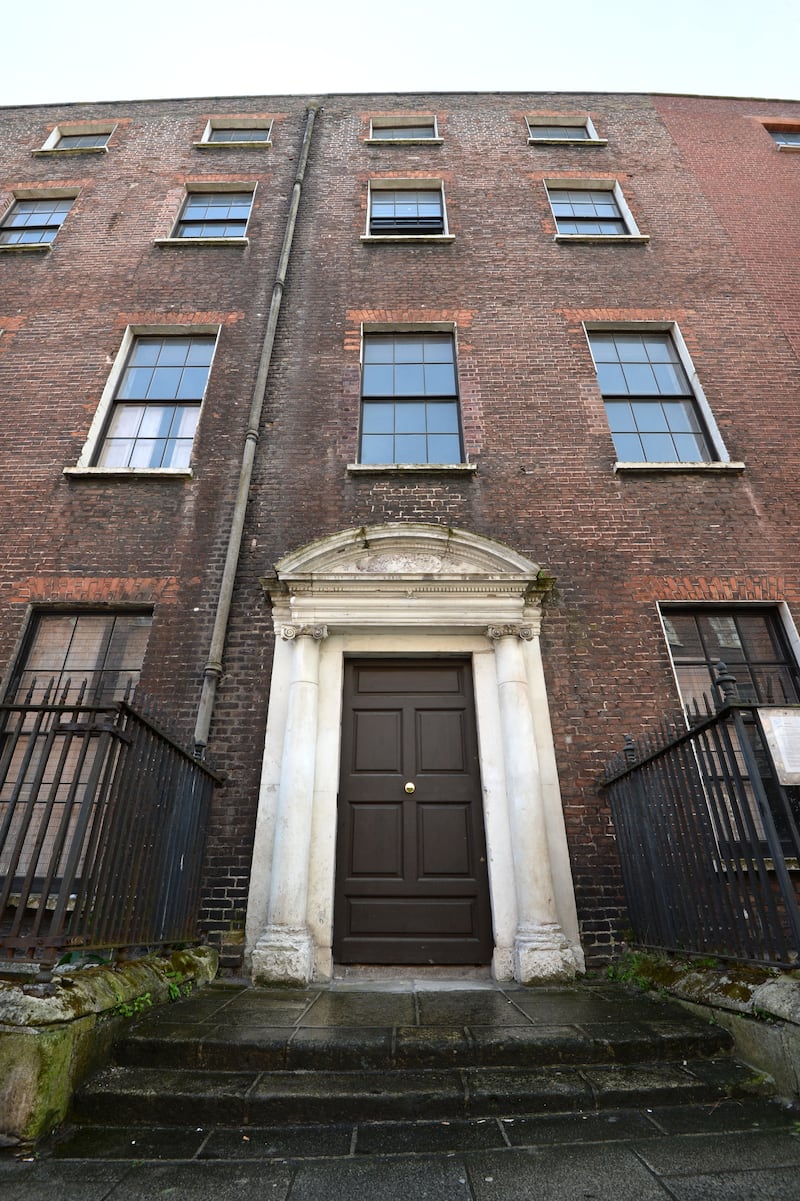As John Healy drove a horse-drawn hackney down St Augustine Street on an ill-fated day in April 1900, what should have been a routine journey turned into a major medical emergency. When the “breaching broke”, the 26-year-old was thrown to the ground and the wheel of the laden cart passed over his abdomen. With the help of a passing hackney carriage driver, a Dublin Metropolitan Police (DMP) constable took him to Jervis Street Hospital.
Healy was conscious and able to provide a statement to the DMP from his hospital bed, but the situation was hopeless and he died the next morning. As it was the sudden death of an able-bodied man, the DMP informed the city coroner, who issued a precept to hold an inquest within 24 hours. Healy’s was the first case to come before the newly elected city coroner, Dr Louis A Byrne, who remained in that office until 1932.

Held in instances of sudden and suspicious deaths, inquests were an almost daily occurrence in Dublin city at the turn of the century. As a court of record, its functions were to establish identity of the deceased, provide a verdict as to cause of death and, more pointedly, to rule out foul play. Juries of between 12 and 23 men, who were resident ratepayers of over £4, were summoned to assist. Jury members had to conduct a formal viewing of the body, hear evidence from medical experts and eye witnesses, and agree a verdict. Verdicts were usually medical and factual, but juries could and did attach riders – these were supplementary statements of no legal standing that were used to exonerate or blame certain actors. The DMP observed all proceedings.
My book, Ordinary Lives, Death, and Social Class, focuses on the evolution of the Dublin city coroner’s court during the 19th century and analyses 611 consecutive original inquest reports dating from 1900 to 1902. The record destruction in the Public Records Office (PRO) fire in June 1922 claimed most of the pre-1900 original inquest reports for all Irish counties. Using the 1901 census permitted further contextual study of the family and household structures of the court’s subjects.
READ MORE
Tenement rooms were physically treacherous spaces for young children: every year about 25 died from burns or scalds
The same cannot be done for the 1911 census year, as so few reports survive owing to the PRO fire. The coroner and morgue registers for Dublin city survive in full and are held at the National Archives of Ireland, but these administrative records are devoid of the voices of ordinary people. Court reporters were permanent fixtures by 1900, and while newspaper articles can be used in the absence of original inquest reports, they should be approached with caution as coverage was selective and partial.

To a modern reader, much of what came before Dr Byrne’s court is eerily familiar, Dublin had a serious housing crisis and few households had the comfort of a living wage. Unsurprisingly, over half the deaths in my sample occurred in the home. Tenement buildings had inadequate plumbing, cooking and sanitary arrangements, and they were not designed for multiple-family occupancy. Tenement rooms were physically treacherous spaces for young children: every year about 25 died from burns or scalds. Pulmonary diseases such as tuberculosis were rife and with no space to isolate sick and infirm family members, the consequences were inevitable.
Because tuberculosis was not listed as a notifiable disease until 1947 it was an omnipresent threat in overcrowded tenements, which was compounded by grinding poverty. Middle- and upper-class cases rarely came before the coroner; they lived and worked in better environs and were more likely to be in receipt of regular medical care.
Sir Charles Cameron, the city’s foremost public health officer, contended that in working class households cash incomes ran out by Monday or Tuesday and reliance on “the pawn” was high. He estimated that almost 2.9 million pawn tickets were issued in 1903. Pawned goods were retrieved on Saturdays, if wages permitted. Fair wages affording adequate diets and sanitary dwellings could have reduced the city’s excess child mortality. Instead, mothers who came before the court were scrutinised and blamed for matters beyond their control. By contrast, landlords and ”house farmers” were rarely called to task when broken banisters and inadequate lighting in communal areas caused deaths from falls in the very young and older cohorts.
‘No blame’
Just over one sixth of the deaths I examine occurred in unsafe work environments. Riders in such cases were always nuanced by local knowledge: John Healy was unmarried and the owner of the hackney was a small-scale operator who was not subject to the terms of the Workmen’s Compensation Act, nor could he afford to pay compensation. In his case the rider stated the jury’s sympathies but attached “no blame”. When cases concerned the tram and rail companies, riders always carried a recommendation to compensate dependent relatives.

Women who kept “bad company” or had any imputation of immorality against them were routinely pursued into the criminal courts on infanticide or neglect charges
The saddest cases were of unknown and unnamed adults and infants whose identities were never established. Many infants were stillborn, but some bodies bore marks of violence. Coronial court proceedings were important in instances where mothers were apprehended and, back then, respectability mattered. Compassion was shown to married women, and in cases involving “first offence” single women, a rider of “no blame” held great weight. Women who kept “bad company” or had any imputation of immorality against them were routinely pursued into the criminal courts on infanticide or neglect charges.
Suicide cases came to a conclusion in the colonial courts. The respectability of families in such cases rendered accounts of suicidal intent into open verdicts citing “insufficient evidence”.
Dublin had a heavy drinking culture. As scholars such as Elizabeth Malcolm and Diarmaid Ferriter have pointed out, for men, the public house was central to getting work, getting paid and getting on. Days and nights’ drinking often resulted in cases of “one-punch” fatal assaults. If perpetrators had prior “good character” they were treated leniently in the criminal courts.
Other violent deaths were not so sudden. Some women and children suffered a slow demise at the hands of abusive men. Sarah-Anne Buckley’s work has shown how some women used the adversarial courts to bring errant husbands into line, but it was a dangerous game. Associated shame raised community awareness but it could also make volatile situations worse.
Vernacular justice prevailed too. Bridget Treacy was so angry when a drunken Christopher O’Connor came to “get his wife” (her friend), that she assaulted him. Irrespective of the jury rider that identified her attack as the cause of his death, Treacy was not charged. Even the newspapers glossed over this detail, stating instead that his death was from an accidental fall. Murder cases were rarely prosecuted by the state. Men who killed their wives and children were usually charged with manslaughter and, because judges feared plunging families into poverty in the absence of “the breadwinner”, sentences were light.
Fascinating details can be gleaned from original inquest reports, which are a treasure trove of Irish medico-legal and socio-economic history. Death is a difficult subject but the records provide incredible insights into the lived experience of ordinary Dublin people. They were resilient, proud and resourceful, even in the face of dire social inequalities.
Dr Ciara Breathnach is Associate Professor in History, University of Limerick and an Irish Research Council Laureate Awardee. She is the author of the newly published Ordinary Lives, Death and Social Class: Dublin city Coroner’s Court, 1876-1902 (Oxford University Press, £75).











